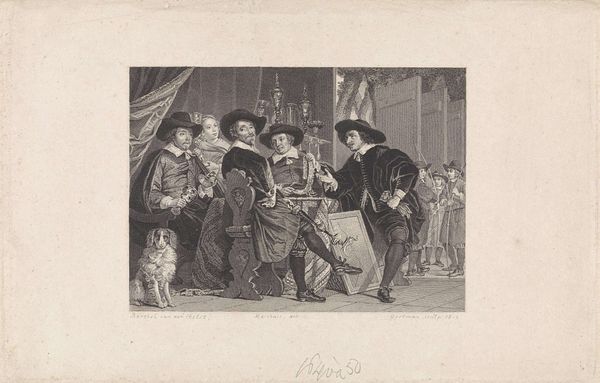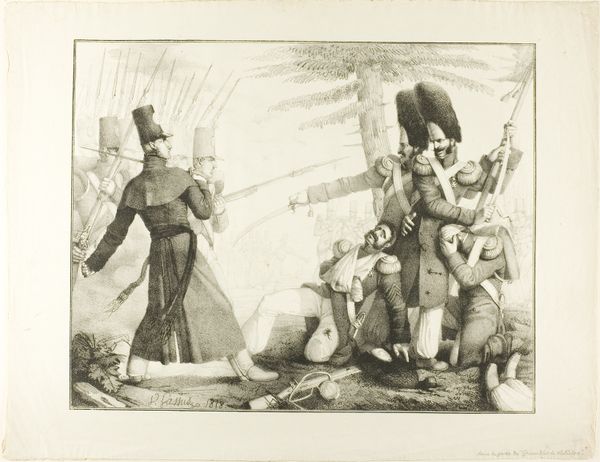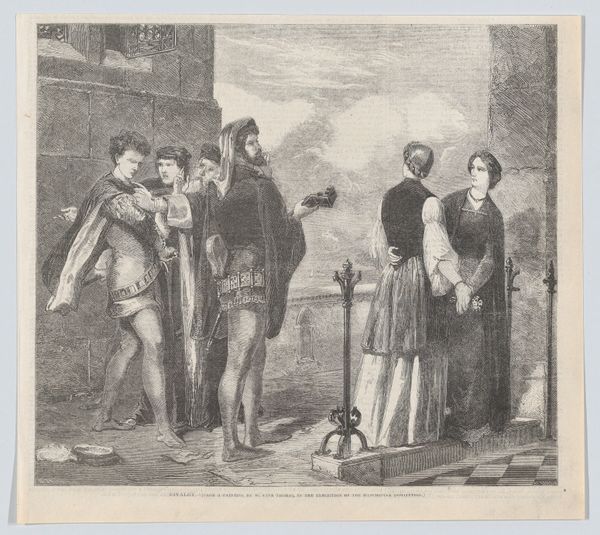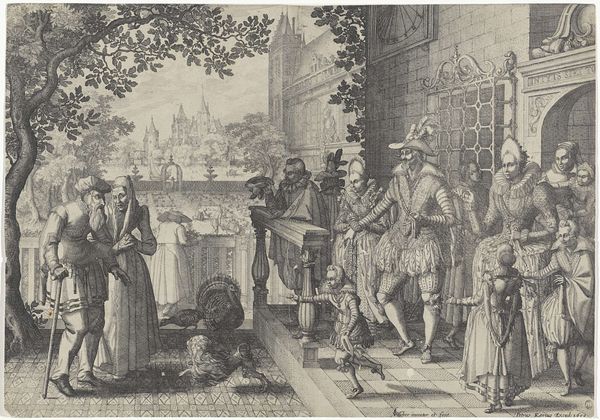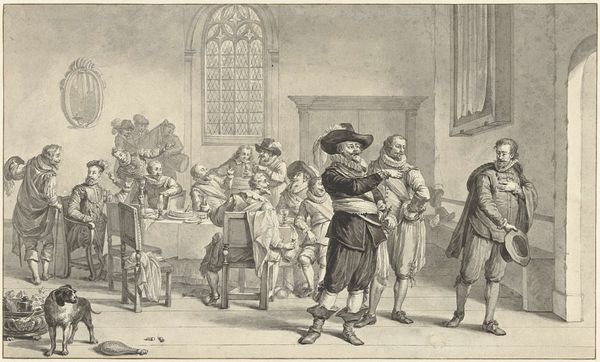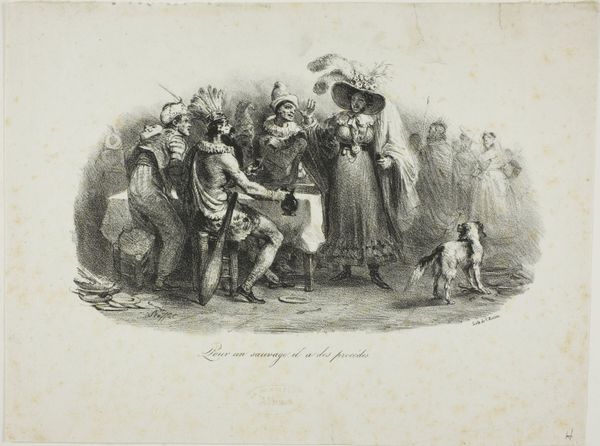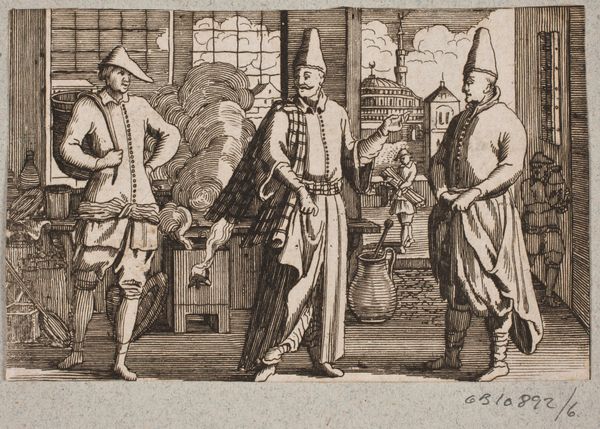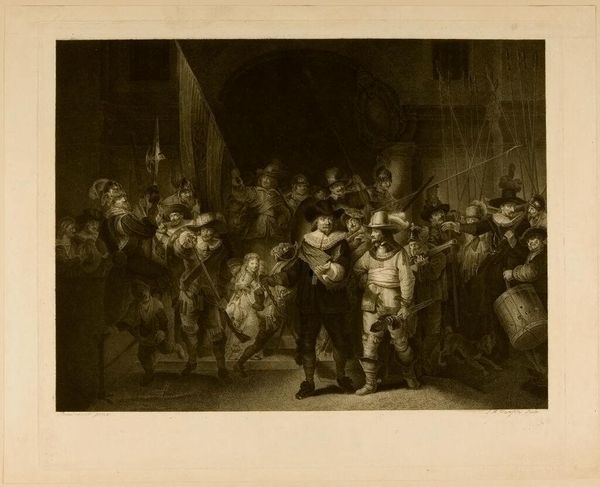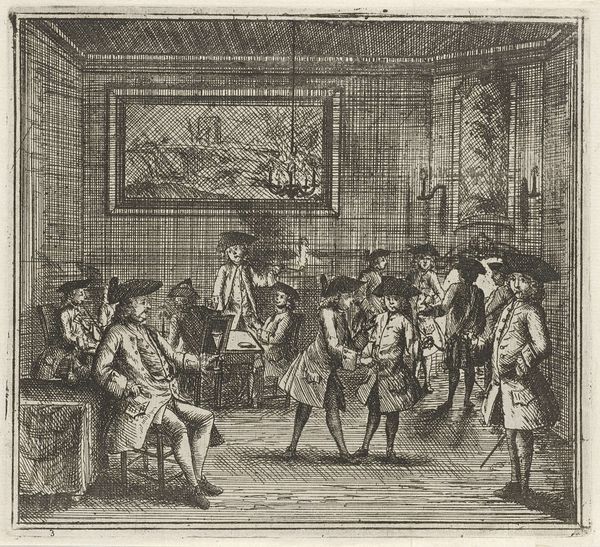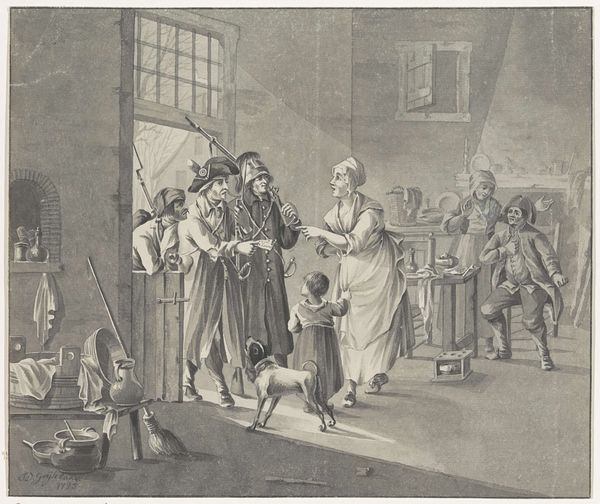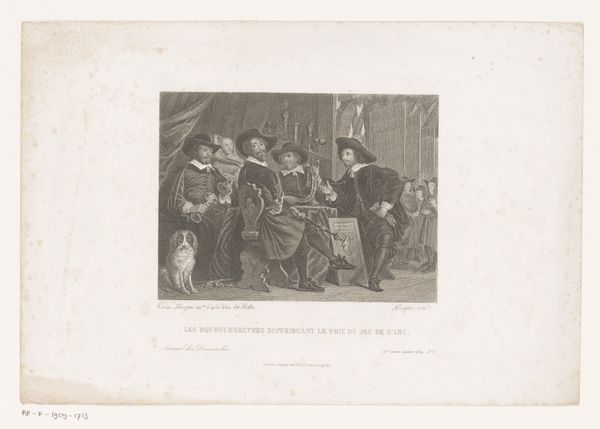
Overlieden van de St. Sebastiaans- of Handboogdoelen te Amsterdam 1653 - 1700
0:00
0:00
drawing, print, ink, engraving
#
portrait
#
drawing
#
baroque
#
dutch-golden-age
# print
#
charcoal drawing
#
ink
#
group-portraits
#
portrait drawing
#
genre-painting
#
engraving
Dimensions: height 281 mm, width 439 mm
Copyright: Rijks Museum: Open Domain
Curator: So, here we have "Overlieden van de St. Sebastiaans- of Handboogdoelen te Amsterdam," an engraving – that's to say, a print – attributed to Julius Henricus Quinkhard, and it seems to hover around the late 17th century, early 18th. What’s your first impression? Editor: My immediate reaction is of poised confidence—the sitters, these regents perhaps, occupy their space with an unhurried self-assurance, surrounded by visual cues to their status, wealth and cultural importance. Almost aggressively serene, if that makes sense? Curator: Absolutely, "aggressively serene"—I love that. The dog contributes to the "leisure class" ambiance. You have this tableau of burghers, almost bursting with civic pride. This print feels utterly characteristic of the Dutch Golden Age, don't you think? That Baroque swagger but also very clearly those merchant-class sensibilities. Editor: I do, but let’s not ignore those symbolic elements embedded here, especially when speaking of this guild of St. Sebastian. The saint is always identified with arrows, often shown pierced by them. And here the board behind them showing him, but a small element of what would become associated with archery, hunting, strength, male prowess… The artist carefully juxtaposes those historical connotations of saintly virtue and defense of faith to make them symbols of mercantile acumen and stability in 17th century Amsterdam. Curator: It's that wonderful tension, isn’t it, the sacred and the secular all tied up together. And I mean, let’s face it, that saint overlied is kind of small relative to the size of these dudes, and, well, relative to the dog as well. And all these cups behind. How heavy were those golden ages! Editor: Cups filled with liquid gold in various stages perhaps, if you get my symbolic drift! Though on a side note, given all of these fine fabrics, I am rather compelled by how somber everything is. A few cups. Little colour... Did that indicate the social and historical conditions during that period? Curator: Absolutely—there’s a gravity there. The almost monochromatic quality emphasizes that stoicism—less focused on lavish colours and more about… weightiness, social responsibility and civic strength. Editor: The print reminds us how objects, too, accumulate and mirror the historical period of creation, revealing traces and aspirations. Curator: Beautifully said! What I love is that the artist invites us into a world where public service mingles with personal glory.
Comments
No comments
Be the first to comment and join the conversation on the ultimate creative platform.
